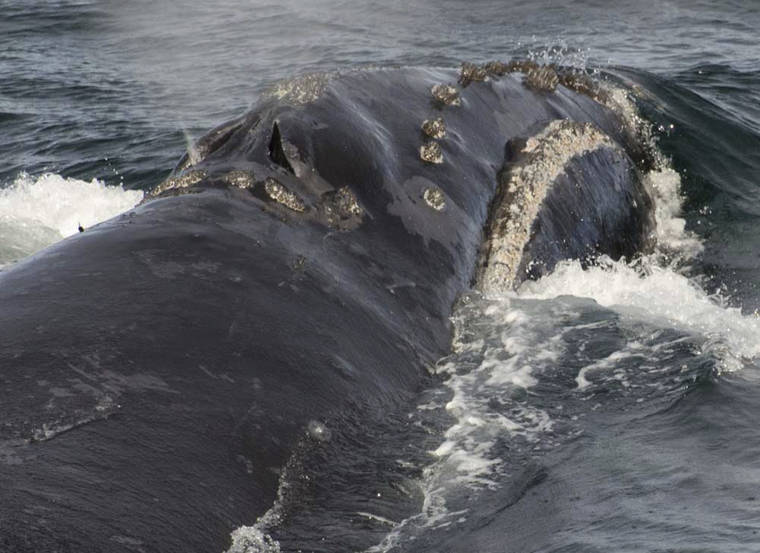ANCHORAGE, Alaska — Federal marine biologists have recorded singing by one of the rarest whales on the planet.
National Oceanic and Atmospheric Administration researchers used moored acoustic recorders to capture repeated patterns of calls made by male North Pacific right whales, the first time any right whale songs in any population have been documented, said NOAA Fisheries marine biologist Jessica Crance on Wednesday from Seattle. She spoke to southern right whale and North Atlantic right whale experts to confirm that singing had not previously been documented.
The number of eastern North Pacific right whales is estimated at just 30 animals from a population largely wiped out by whalers. The slow-moving whales remained buoyant after death and were targeted by whalers.
Researchers detected four distinct songs over eight years at five locations in the Bering Sea off Alaska’s southwest coast. Weird patterns of sound were first noted during a summer field survey in 2010, Crance said.
“We thought it might be a right whale, but we didn’t get visual confirmation,” she said.
Humpback, bowhead and other whales are known for their songs.
NOAA Fisheries researchers reviewed long-term data from acoustic recorders and noted repeating patterns of the sound patterns. However, it took until a voyage in 2017 to coordinate a right whale song with a sighting of the male making it, Crance said.
Right whales make a variety of sounds. A predominant call sounds like a gunshot. They also make upcalls, downcalls, moans, screams and warbles.
To be a song, the sounds have to contain rhythmically patterned series of units produced in a consistent manner to form clearly recognizable patterns, Crance wrote in a paper for the Journal of the Acoustical Society of America.
“It’s a series of sounds that are reproduced in a stereotyped, regular manner that are repeated over and over,” she said.
The remote Bering Sea makes learning about right whales a challenge. Their range remains unknown.
No one knows why right whales sing, she said, and it almost raises more questions than it answers.
“It could be that there are so few of them left, they feel the need to call more frequently or sing,” she said.
A singing male may by trying to attract a female, she said.
“With only 30 animals, finding a mate must be difficult,” Crance said.


